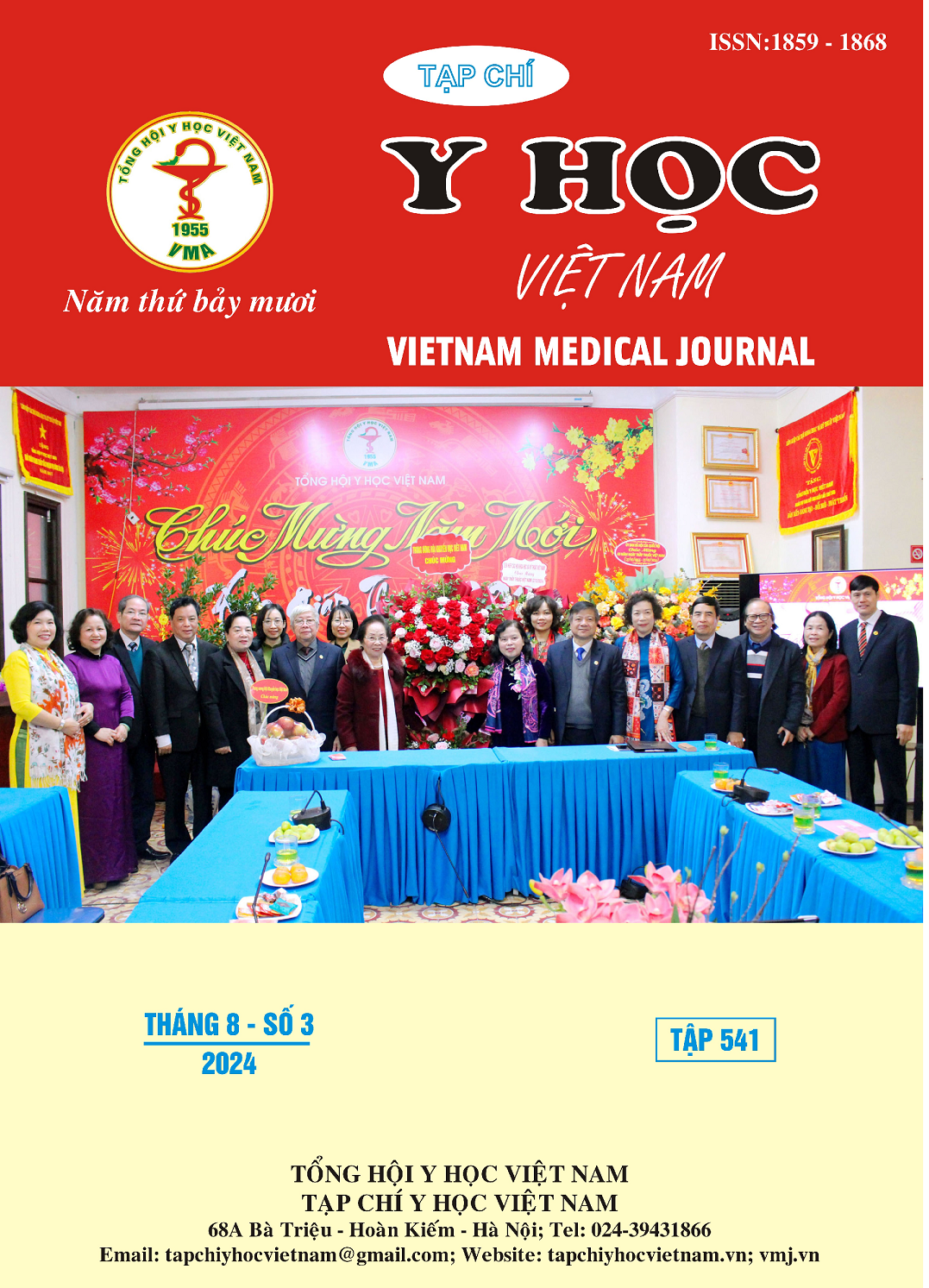THE CHARACTERISTICS OF LUPUS ENTERITIS: A VIETNAMESE SINGLE-CENTER EXPERIENCE
Main Article Content
Abstract
Objective: Although systemic lupus erythematosus has been extensively studied but data regarding lupus enteritis is scarce. Therefore, we conducted study into the clinical, laboratory features as well as the outcome of lupus enteritis in Vietnamese patients who treated at our hospital. Subject and Methods: The data of systemic lupus erythematosus patients who admitted at Gastroenterology department of University Medical Center Ho Chi Minh City from January 2018 to January 2023 and fullfiled the 2012 SLICC criteria was examined. Lupus enteritis was diagnosed if all of three criteria were met: (1) abdominal symtomps, (2) diffuse long-segment bowel thickening, (3) requirement for starting steroid or increasing outpatient steroid dose. The following information was collected: clinical manifestation, laboratory test, abdominal imaging, treatment course and follow-up. Results: A total of 21 patients satisfied the inclusion criteria was retrospectively reviewed. Their median age was 34 (16-58) and all were female. Three key symtomps were abdominal pain (100%), vomiting (94.1%) and diarrhea (61.9%). All except one have active lupus with median SLEDAI-2K (Systemic Lupus Erythematosus Disease Activity Index-2000) 6 (2-20). Lupus enteritis usually involved only small intestine (90.5%) rather than whole lower gastrointestinal tract (42.9%). Response to steroids treatment (40 mg methylprednisolone equivalent) was extremely good, except one case needed pulse steroids. 2 out of 19 patients were died because of other complication of lupus, not enteritis. The relapse rate of lupus enteritis was relatively low 31.6% after 17 months (3-47) follow-up. Conclusions: Lupus enteritis should be suspected in active lupus patients presenting with abdominal pain, vomiting, diarrhea. Steroids, with the dose of 40 mg methylprednisolon, was the first-line treatment.
Article Details
Keywords
Lupus enteritis, Systemic Lupus Erythematosus
References
2. Brewer, B. N. & Kamen, D. L. Gastrointestinal and Hepatic Disease in Systemic Lupus Erythematosus. Rheum Dis Clin North Am 44, 165-175, (2018).
3. Lee, C. K. et al. Acute abdominal pain in systemic lupus erythematosus: focus on lupus enteritis (gastrointestinal vasculitis). Ann Rheum Dis 61, 547-550, (2002).
4. Yuan, S. et al. Clinical features and associated factors of abdominal pain in systemic lupus erythematosus. J Rheumatol 40, 2015-2022, (2013).
5. Koo, B. S. et al. Lupus enteritis: clinical characteristics and predictive factors for recurrence. Lupus 24, 628-632, (2015).
6. Janssens, P. et al. Lupus enteritis: from clinical findings to therapeutic management. Orphanet J Rare Dis 8, 67, (2013).
7. Isenberg, D. A. et al. BILAG 2004. Development and initial validation of an updated version of the British Isles Lupus Assessment Group's disease activity index for patients with systemic lupus erythematosus. Rheumatology (Oxford) 44, 902-906, (2005).
8. Ju, J. H. et al. Lupus mesenteric vasculitis can cause acute abdominal pain in patients with SLE. Nat Rev Rheumatol 5, 273-281, (2009).
9. Medina, F. et al. Acute abdomen in systemic lupus erythematosus: the importance of early laparotomy. Am J Med 103, 100-105, (1997).
10. Zizic, T. M., Classen, J. N. & Stevens, M. B. Acute abdominal complications of systemic lupus erythematosus and polyarteritis nodosa. Am J Med 73, 525-531, (1982).


